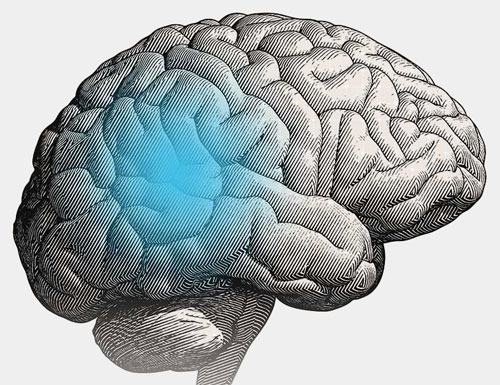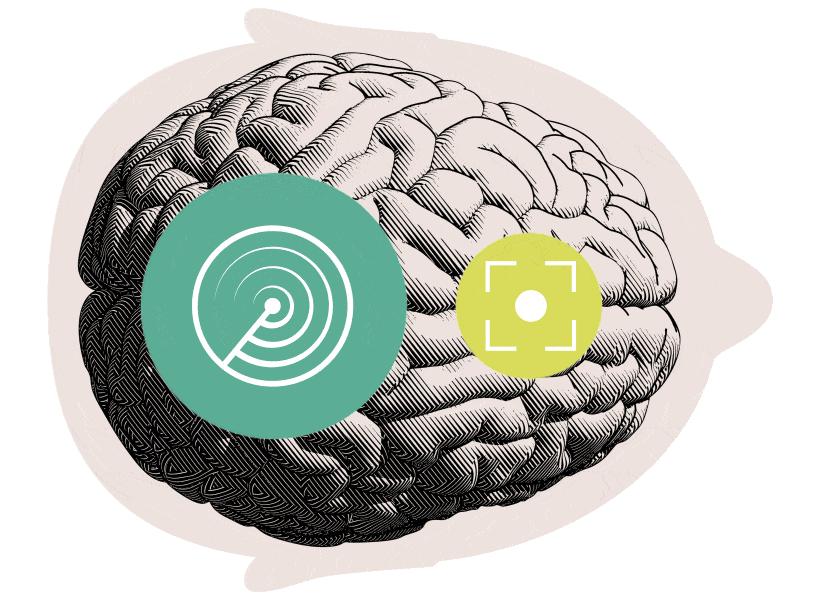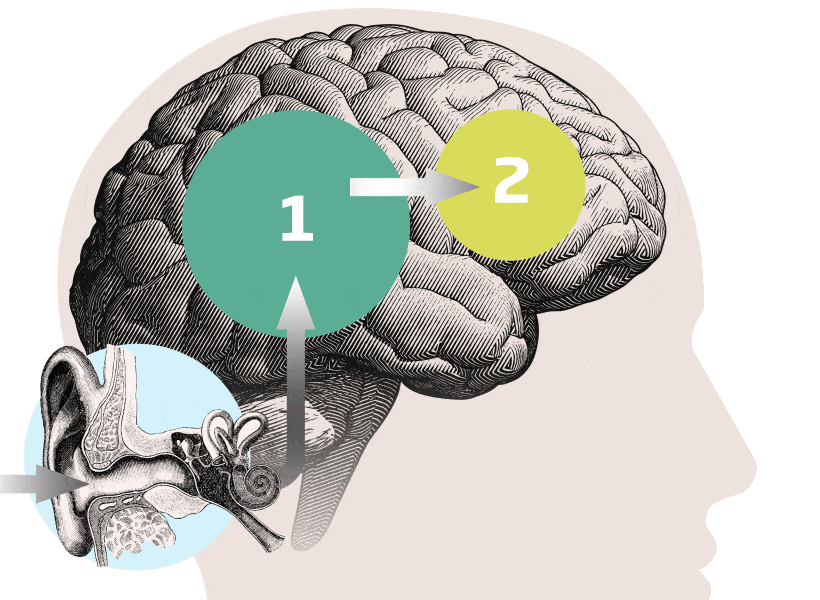2801 Wehrle Dr. Suite 3
Williamsville, NY 14221
Office: 716-633-2137
Fax: 716-954-7139
Oticon has always taken the approach of developing hearing aids that support the brain in how it makes sense of sound. At Oticon we walk a certain path—we support the brain in making sense of sound. Rather than only focusing on the ears, we think brain first. It’s a journey of constant discovery—one that we’ve followed for decades—where we explore brain-related territories in audiology. We call this unique thinking BrainHearing.
The latest scientific breakthrough shows the brain can handle access to more information from the full sound scene. We need to give the brain more from its surroundings. This breakthrough defines our next step forward—one that will put our vision at the forefront of hearing care and turn the new perspective in BrainHearing into a reality.

Two subsystems work together inside the brain to help the brain make sense of sound: the orient subsystem and the focus subsystem.

The orient subsystem always comes first. When we hear, it scans all surrounding sounds – no matter their nature or direction – to create a full perspective of the sound scene. It then creates an overview of the sound objects around us.
The focus subsystem helps people select which sounds to listen to. Once we have an overview of the sound objects around us, we use the focus subsystem to identify the sound we want to focus on, listen to or switch attention to, while filtering out irrelevant sounds.
When sounds reach the inner ear, they are converted into a signal that is sent to the brain. This is what we call the neural code which is sent via the auditory nerve to the brain’s hearing center—the auditory cortex. There, these neural codes become meaningful sound objects, which the orient and focus subsystems can use.

Needs a good neural code to create an overview of the sound objects and begin separating sounds to determine what is going on in the surroundings. This provides the brain with the best conditions to decide what to focus on and listen to.
Navigates through the full perspective of the sound scene. It identifies the sound it wants to focus on, listen to or switch attention to, and irrelevant sounds are filtered out.
Downgrading sound input to the brain and failing to treat the hearing loss in the correct way can have a variety of consequences.
A limited sound scene without access to the right input can lead to serious problems in life.
Time to get more out of life! Oticon More is the hearing aid with built-in intelligence to make more sense of sound. Oticon More gives your brain the clearest sound information, allowing you to hear sounds that shouldn’t be missed. You benefit with improved speech understanding with less listening effort and the ability to remember more.
The Oticon More family is continuing to expand with more choices so more people can benefit from its superior sound quality. Oticon More works more like how the brain works, because it learned through experience.
The world’s first hearing aid with an on-board DNN, Oticon More delivers 30% more sound to the brain and increases speech understanding by 15%.

To learn more about Brain Hearing Technology, call today (716) 633-2137 or request a callback.
Request a CallbackMaintain your youthful appearance with regular treatments and save with our VIP Injectable Program Membership! This annual membership is $200 and provides a variety of discounts and benefits.
*Not valid with other discounts or special offers. Terms and conditions apply.
Contact UsContact your neighborhood hearing professional for a full hearing evaluation or to discuss your hearing health and the best way to treat your hearing loss.
Book Appointment Call Now! 716-633-2137